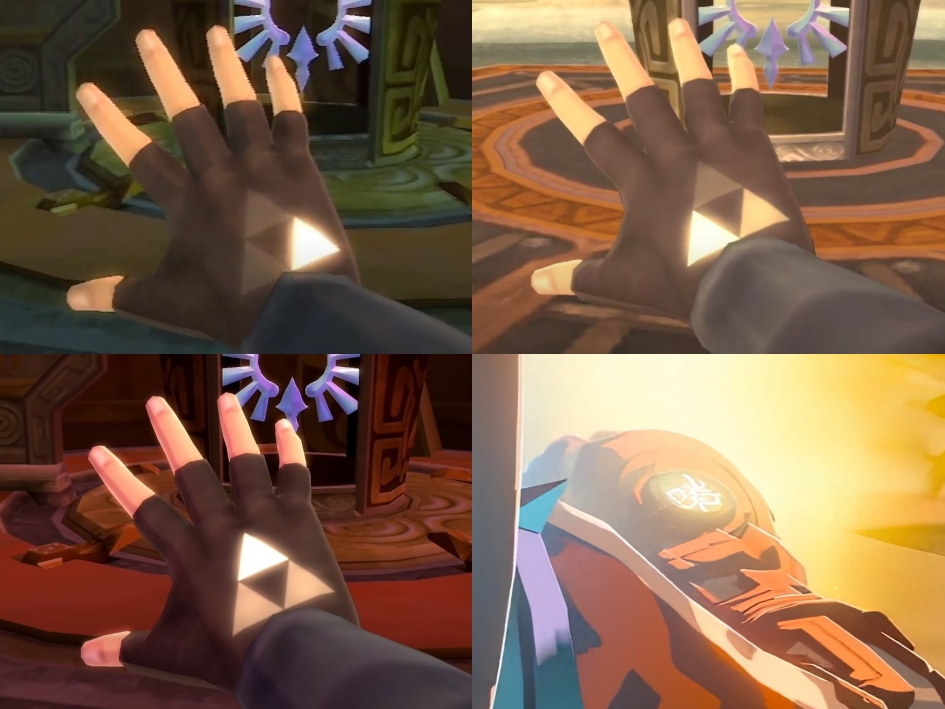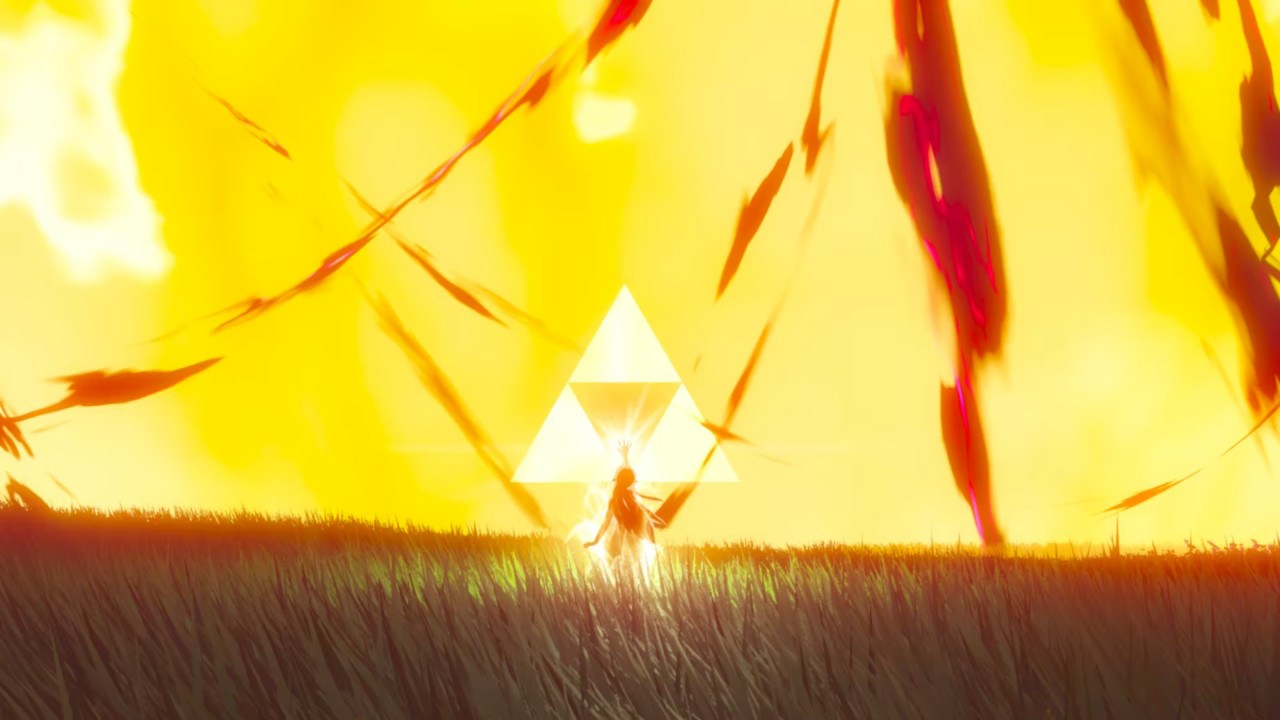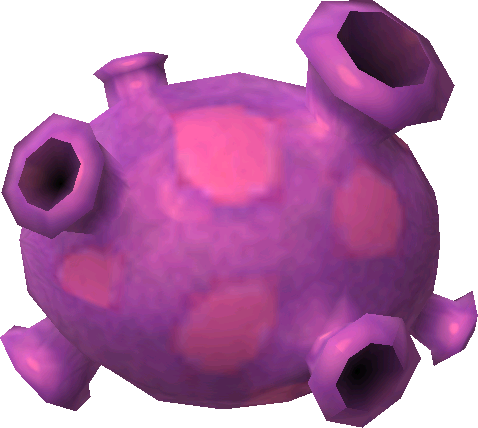@Tye
Another mention of previous Links and Zeldas from BotW. Zelda is also said to have the blood of Hylia.
(This also implies that Hyrule fought some version(s) of Ganon(dorf) multiple times between the Imprisoning War in TotK and the Calamity 10,000 years ago)
Besides, while I think that your theory is self-consistent and explains the statue plot hole (I said "minor" because neither BotW nor TotK revolves around the statues), I think it's too far from the developers' intentions and the evidence we have. Skyward Sword never suggests another timeline, not even as a throwaway line, whereas in OoT we see two endings in two different timeframes. Yeah, Downfall is not seen either, but "this is what happens if Link dies" is a straightforward explanation. Skyward Sword, on the other hand, sells itself as a stable time loop, and that's it. If you look too close, it probably doesn't work, so its plot is a bit of a mess (to be fair, it happens a lot with time-travel stories), but IMHO, the intentions are clear.
And do we really need another timeline? If another explanation is more or less equally believable, we are violating Occam's razor by literally multiplying the timelines. Something similar can be said for Nabooru and, especially, Ruto. The developer's intent at the time of BotW was clearly to reference OoT. CaC only solidifies this. Can the sage from the past be Ruto? Sure, intentions can have been changed, but we need some evidence. The helm design is an (interesting) allusion. On the other hand, the Zora tables referencing "the Hero of Legend" are solid evidence. Your explanation that this "Hero of Legend" is TotK!Link could theoretically work (though we need a very liberal use of "fighting alongside"), but it also needs some evidence, and AFAIK, nowhere in-game is it hinted that a present-day swordsman would defeat the ancient evil from the foundation of Hyrule, not even in other Zora monument, nor by the Sheikahs (who are usually pretty good at this kind of stuff). The only exceptions are the stone tables in the sky, but no one had access to them before TotK, and there is no evidence that the Zora were aware of them.
So, basically, to make the explanation works, we are multiplying the timelines, multiplying the Rutos, and assuming that at least among the Zora there was at least a vague notion of the events of TotK would have happened in the future, despite no direct evidence. It's far more intuitive to fit the games into the existing timeline.
There absolutely
is evidence for BotW/TotK being on a different timeline, though, which I’ve already explained, but I’ll try to make that more clear here. The thing is, we can’t take BotW and CaC at face value anymore, because TotK contradicts them. The developers’ intentions have seemingly changed between BotW and TotK, or potentially weren’t even fully decided prior to TotK in the first place. BotW leads us to believe that Calamity Ganon arose from OoT Ganondorf, with Ruto and Nabooru assisting in the fight against him, and CaC further cements this. (It also states that another male Gerudo hasn’t been born since then, which I only recently learned.) But TotK goes against this, because we find that the source of Calamity Ganon is in fact
not OoT Ganondorf at all, but an entirely different Ganondorf. And that also means that the Ruto and Nabooru that we thought were the ones from OoT must be different sages entirely, too, because they were directly tied to the same events that we had assumed were supposed to be OoT. But TotK changed that, making those events instead be this
other Imprisoning War, complete with a number of very obvious OoT parallels such as the name of the Imprisoning War itself, the Sage of Light being Rauru, the framing of the scene with Ganondorf kneeling before the king mirroring OoT exactly, etc. Yes, names and concepts are commonly reused in the Zelda series, but never quite to
this extent. It immediately read to me as “this is a parallel of OoT’s events in another timeline,” which is really the only sensible conclusion you can come to given TotK’s contradictions of what we previously thought was supposed to be OoT’s events. Honestly, rather than it going against the developers’ intentions, I’d say it very likely aligns with what the developers were trying to convey to us in the game.
It can’t be that TotK Ganondorf was a different Ganondorf that came before OoT Ganondorf, because we know from CaC that another male Gerudo hasn’t been born since the one that became Calamity Ganon, and even if we’re to assume that’s not canon now there’s
no way the Gerudo would let another Ganondorf essentially repeat the events of TotK’s Imprisoning War in OoT. CaC touches on the great shame the Gerudo felt over giving birth to the source of Calamity Ganon, and Urbosa talks about it in BotW as well, so if this shame was great enough to persist well over 10,000 years into the future, it surely would have still existed a mere few hundred years after TotK’s Imprisoning War. (And it has to be less than 400 years if you believe that Kotake and Koume are the same ones from OoT—which is another issue itself, because that may not even fit within the established timeline, given that there had to have been around 400 years between Hyrule’s founding and OoT at the very
least since there are 100 years between TMC and its backstory, plus at least 100 years between TMC and FS and another 100 years at least between FS and OoT since 100 years seems to be the earliest known and most common amount of time between incarnations of Link and/or Zelda, plus there’s probably at least 100 years or so between Hyrule’s founding in the Era of Prosperity and TMC’s backstory of the Hero of Men in the Force Era as well, and that’s all if you assume the very
least amount of time possible happened between these events with absolutely no breathing room beyond that.) After all, FSA Ganondorf was expelled by the Gerudo and forced to become a desert nomad rather than being automatically accepted as king from birth as OoT Ganondorf and TotK Ganondorf were, so if TotK and OoT are supposed to exist on the same timeline then OoT Ganondorf should have never been made king in the first place.
Either you have to ignore TotK’s inconsistencies with BotW/CaC and OoT entirely, or you have to assume that BotW/CaC’s description of the “OoT” events must either have been retconned or are supposed to be interpreted differently. And really, it’s only the mention of the hero of legend that appears to cause issue, which I’ve already provided a possible explanation for, and it’s not like inconsistencies with a presence or lack of a hero haven’t been a thing before in the history of the Zelda series. Everything else fits
perfectly if you assume what we thought was referring to OoT is instead referring to TotK’s Imprisoning War somewhat mirroring it on another timeline. The only tiny bit of info that’s contradictory to this is the mention of a hero of legend in that time, but again, that doesn’t even make sense within the context of TotK anyway for the same reasons I already explained above; we know those events mentioned in BotW and again in TotK with Ruto and such are supposed to be that of the origin of Calamity Ganon, formerly believed to be OoT, but now known to be an entirely different event with entirely different characters. There was no hero of legend present in TotK’s Imprisoning War (aside from the sage’s knowledge of Link in the far future), so clearly the legends aren’t exact with the details (an idea the developers have brought up multiple times, along with Fi highlighting this in SS when she says that the oral tradition “is one of the least reliable methods of information retention and transmission”), which is the simplest explanation for this discrepancy. After all, while not physically present in that time, the hero of legend who wielded the Master Sword from the far future was known about, and the Master Sword itself was sent back in time to that point, too. Over time, it’s entirely possible that these details were conflated and it was thought that the hero of legend existed in that time, too. No matter how you try to explain it, there are inconsistencies somewhere, and I feel like the spoken legend being slightly misinterpreted over time is a far more likely and elegant solution than ignoring the fact that BotW’s “OoT” simply
can’t be the OoT that we know based on what TotK reveals to us.
So, given this context, Occam’s razor would actually suggest that it must be either an alternate timeline or a separate continuity altogether, because anything else just doesn’t fit without much more convoluted theories and assumptions. And why settle for it being a completely separate continuity (something I absolutely don’t see Nintendo doing, especially after they claimed the reason for not revealing BotW’s timeline placement is, at least in part, to fuel speculation of where and how the game may fit in, and if the answer is actually “it doesn’t!” then that would be incredibly misleading and disappointing) when there’s already an alternate timeline that works perfectly for it branching off of SS? We could argue endlessly about whether or not SS is truly supposed to create a timeline split, but it absolutely
can’t be a perfectly closed loop because the game shows us how it’s not—not only with the Tree of Life and Master Sword, but also with Zelda (awoken with Hylia’s memories) being completely unaware of Ghirahim’s plan to take her back in time and resurrect Demise in the past; Hylia set up her own plan to eradicate Demise with the Triforce in advance in a way that transcended time itself, with every step along the way being known to her since it became predestined. Yet Ghirahim’s disruption of those plans caught Zelda/Hylia unawares, which shouldn’t have been the case if these events were truly unchanged from Hylia’s predetermined history of events. Demise is also given contradictory sealings/revivals/defeats, which only makes sense if there was indeed a timeline split. Yes, it’s messy, inconsistent, and poorly conveyed, unless you consider that the original timeline of events as predestined by Hylia’s plan is the “closed loop” that we perceive, while the unforeseen changes in history due to Ghirahim’s actions creates a split, explaining stuff like why the Master Sword doesn’t follow the same time logic as Impa’s bracelet and Zelda. Additionally, we’ve seen a timeline “fix” itself due to paradoxes before, namely the “divine prank” that inexplicably gave Ganondorf the Triforce of Power (along with OoT Link and Zelda’s descendants having the Triforce of Courage and Wisdom, respectively) when he never touched the Triforce in that timeline; this happened because Link was sent back in time in OoT, creating the Child Timeline, with the Triforce of Courage still in his possession, which created a paradox since the Triforce was still untouched in the Sacred Realm in that timeline, so time “fixed” itself by splitting the Triforce among its destined wielders as it is in the other timeline, unbeknownst to them. You can apply this same logic to stuff like the Master Sword suddenly appearing in its pedestal in SS’s original timeline when it was never there before, explaining how it can exist in the same state in both timelines.
As for the multiple Links and Zeldas, that doesn’t really change my theory at all, and I was only questioning that because TotK seems to throw that into uncertainty in some ways. But it can be assumed that Calamity Ganon attacked Hyrule multiple times throughout this timeline and that’s where these heroes of legend and princesses of Hyrule fought Ganon together (and also at least one of those heroes was Zonai, for some reason), so that all fits. Of course, if Hylia is still a goddess in this timeline and never became mortal, that does beg the question of how Zelda supposedly carries her blood, but in this timeline the history of Skyloft and the lineage of the Royal Family would have likely played out differently anyway, so for all we know some other “Zelda” (it could have even been Sonia!) was eventually gifted with some form of power from Hylia, whether that was a piece of her essence/the Light Force, or something else entirely—like the full Triforce, hidden within the princess of the Royal Family and passed down through their bloodline, which seems to be implied to be the true source of Zelda’s power in BotW/TotK—and the “sharing the blood of the Goddess” thing was just a legend passed down by the Sheikah given SS’s events in the original timeline or extrapolated based on receiving Hylia’s blessing. Regardless, it doesn’t change the fact that it shouldn’t be possible for Hylia to both have become mortal and still be a goddess at the same time, otherwise that undermines the whole plot of SS, as it’s made very clear that gods can’t use the Triforce, even indirectly, so there’s still that inconsistency with BotW/TotK either way.
But regardless of how BotW/TotK may or may not connect to an alternate timeline from SS, the fact is that BotW/TotK simply
cannot exist within the same timeline relative to OoT as we were originally lead to believe; TotK makes that clear with
its Imprisoning War now being the origin of Calamity Ganon. Which means, aside from even
more convoluted theories that ignore
more inconsistencies, BotW/TotK
have to exist in an alternate timeline, be it one that’s connected to the original timeline in some way or one that’s its own entirely separate continuity. And, as I already explained, I much prefer and expect the former over the latter, and since SS was the last 3D Zelda game before BotW and the first major Zelda game since OoT that could spawn a timeline split, and BotW/TotK would have been the first opportunity for them to utilize said timeline split, I see it as very likely possibility. It explains Nintendo’s vagueness about BotW’s timeline placement, it explains a number of big inconsistencies that you’d otherwise have to just ignore, and, like they did with OoT before it, it strikes me as something that the developers would absolutely do to give themselves more storytelling freedom.




